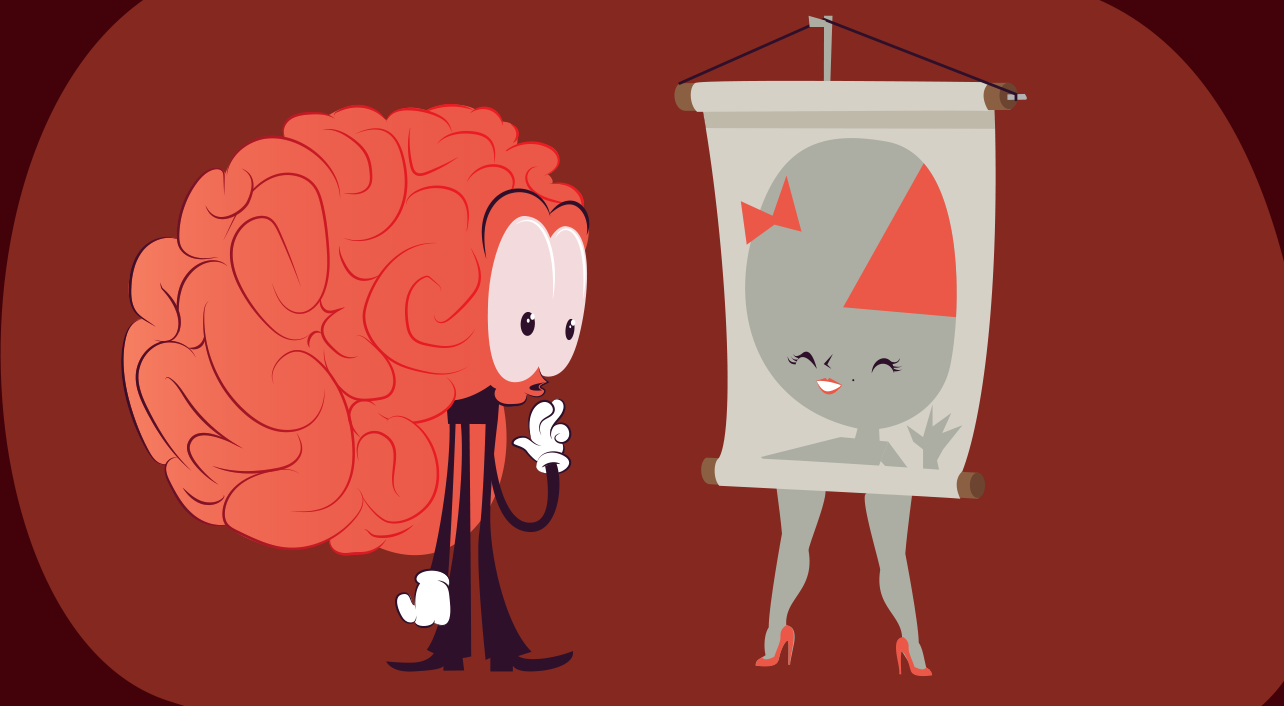- sales
- Blog post
Skeptical buyers believe you when you get graphic
Imagine you’ve just taken a call from a big customer who is convinced his monthly bill is steadily getting higher. It’s not — you checked. There’s been some monthly fluctuation, but on average his bills have been steady for the past year.
You try to explain all this, but your customer isn’t having any of it. He says he’s expecting an adjustment to his bill — in his favor.
What do you do? You don’t want to offend or even lose this customer, but you don’t want to rebate him money he doesn’t have coming to him. The problem is that the customer isn’t always right, and when they aren’t you need a way to persuasively explain the facts to them.
You think about it long and hard, and it seems to you that you could take one of three approaches:
- Review copies of old invoices one by one with your customer.
- Present him a chart showing the billings for the past 12 months.
- Build up his self-esteem, praising him for his well-deserved reputation for fairness, before asking to review the billings.
What to do
The best answer: 2. Present a chart showing billings for the past 12 months.
A study going back a few years from researchers at Dartmouth University and the University of Exeter in England explains why this approach would be most effective. In the experiment, the researchers presented people with facts that contradicted their political views. They deliberately chose emotional topics – highly polarizing issues that make people really dig in their heels.
People who’d opposed President George Bush’s “surge strategy” in the Iraq war in the early years of the 21st century were presented with evidence that the strategy reduced violence in Iraq. And people who disapproved of Barack Obama’s handling of the economy when he took over from Bush were shown evidence demonstrating that jobs had increased during the first year of his presidency.
The point wasn’t to prove anyone wrong or promote a political agenda. The researchers simply wanted to know what might get people to consider evidence that contradicted their deeply held views.
When presenting this evidence, the researchers used approaches similar to the three options you considered for your irate customer:
- Explain the data in words
- Summarize the evidence in a chart, and
- Build up the other person’s self esteem before presenting the evidence in words.
Chart it
The least effective approach? Simply explaining the facts in words. And building up the person’s self-esteem didn’t work either. The most effective technique was to present the information in a chart.
But why? It has to do with the brain’s structure, according to neuroscientists. Cognitive researchers suggest that the human brain has evolved in such a way that it’s more likely to see visuals as “true” and words as, literally, “debatable.”
It seems that when evidence is presented in words, our brains tend to view them as part of an “argument.” So when that evidence contradicts our beliefs, the brain begins creating counterarguments. Present that same evidence visually, however, and we process it differently. We see it as “real” in a way that mere words are not.
It’s no secret, of course, that visuals are powerful tools of persuasion. A classic study from the University of Minnesota, for example, found that presentations using visual aids are 43% more persuasive than unaided presentations.
The brain’s ‘native language’
The Minnesota study also found that visuals don’t have to be especially striking or provocative. Images don’t persuade because they’re pretty. They persuade because they’re in the “native language” of the brain. More of the brain’s processing power is devoted to visual information, so we understand and remember images better than words. What’s more, neurological studies show that the brain has to work harder to process words than pictures, creating more opportunities for the information to be corrupted, manipulated, modified or misunderstood.
So for you and your peeved customer the best option is clear. When you go to meet with him, you aren’t going to show up with a folder full of old invoices. You aren’t going to tell him what a great guy he is. You’re going to hand him a single chart showing that despite some monthly fluctuations, his bills haven’t gone up. And you’re not going to say much; you’re going to let the graphics do the explaining.
Chances are good this approach will work. Of course, his complaints about the bills might be a smokescreen for another issue, or a negotiating ploy, in which case you may have to try something else. But he’s more likely to be persuaded by a chart than by a conversation over a stack of backup invoices or attempts to make him feel good about himself.
This blog entry is adapted from the Rapid Learning module “Communication: Getting Your Buyer to See the Light.” If you’re a Rapid Learning customer, you can watch the video here. If you’re not, but would like to see this video (or any of our other programs), request a demo and we’ll get you access.
The blog post and Rapid Learning video module are based in part on the following scholarly articles:
Nyhan, B. & Reifler, J. (2019). The roles of information deficits and identity threat in the prevalence of misperceptions. Journal of Elections, Public Opinion and Parties, 29:2, 222-244.
Vogel, D.R., et al. (2005). Persuasion and the Role of Visual Presentation Support : The UM/3M Study.

Get a demo of all our training features
Connect with an expert for a one-on-one demonstration of how BTS Total Access can help develop your team.



